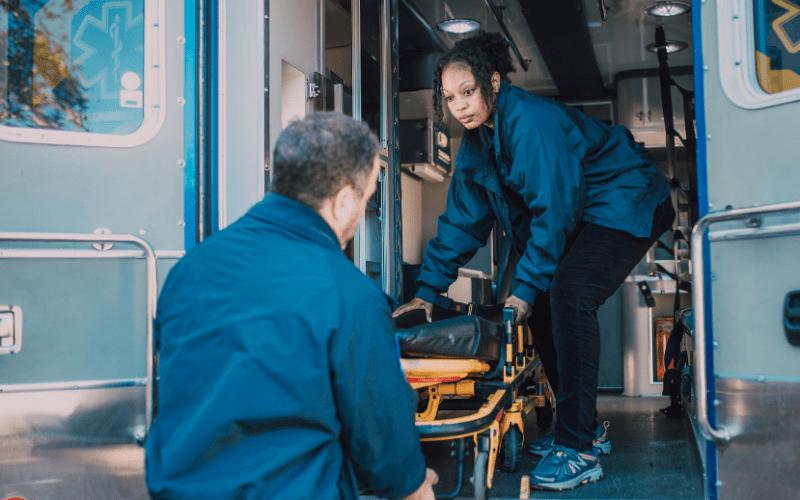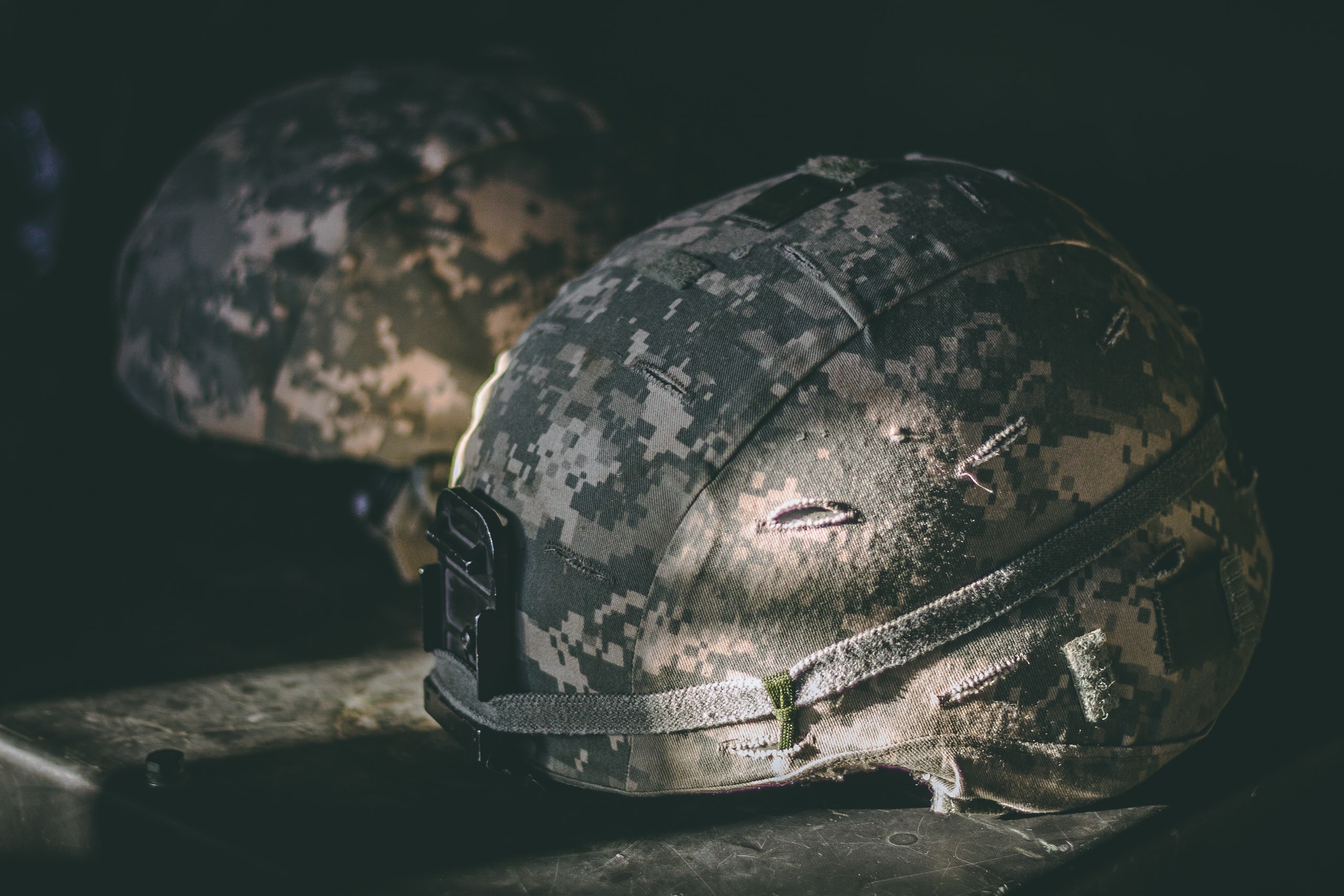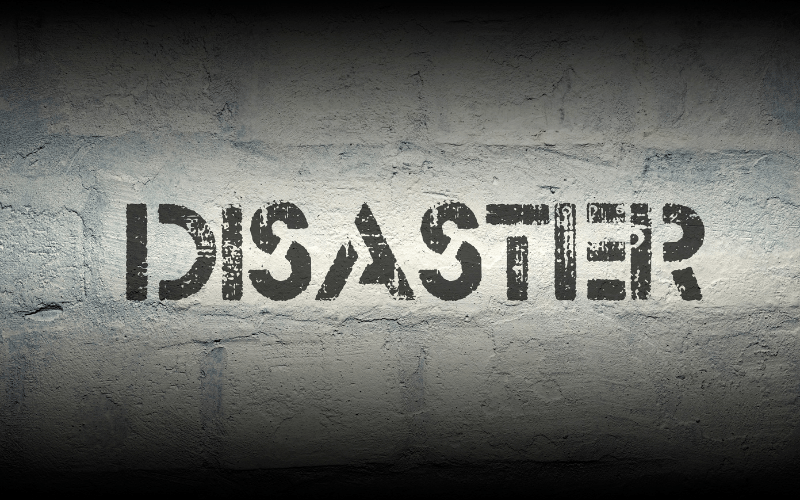To commemorate National First Responders Day on October 28, we turned to EMDRIA member Bonnie Rumilly, LCSW.
10 Tips for EMDR Therapists Working with First Responders
Guest Blog Post by Bonnie Rumilly, LCSW
First responders are a special character and have a unique culture. They are loyal and committed to their profession of serving the public. It is essential for EMDR therapists to be culturally competent and knowledgeable about first responder culture to work with them in a clinically effective way.
It is also important to note that first responder culture is quite nuanced between the branches of police, fire, EMS, dispatch, corrections, animal control, etc. While traits and values are shared between the branches, each has its own culture. Each workplace and volunteer setting is also very different, so one cannot assume one Department is the same as another.
Here are some tips and things to consider for EMDR therapists working with first responders:
- Make sure you can manage the subject matter.
First responders need to be able to go to therapy and receive EMDR without being “worried” about their clinician. They need to believe you can handle what they are about to tell you without being traumatized yourself. First responders are keenly observant and can tell immediately when someone is timid or visibly impacted by their graphic stories and language.
- Be culturally competent when working with first responders.
If you aren’t familiar with the culture, seek out information and exposure to educate yourself. There are plenty of wonderful books, documentaries, and podcasts (such as Responder Resilience Podcast) to help you familiarize yourself with this population. Seek out first responders or ask your local fire department if you could swing by for coffee to learn about their culture.
- It’s okay to ask questions.
If you are new to this population or still learning, asking them questions is okay. However, the questions should not be the purpose of your session, as has been reported by some first responders. If the first responder you are working with uses an acronym you are unfamiliar with or a piece of equipment you have never heard of, ask them to explain. This shows you are genuinely interested in their profession and understand their viewpoint, further building trust.
- Build trust with your first responder.
It is important to build trust by being fully present (mentally), as first responders will read your body language, and if they feel you aren’t interested, then trust cannot be built. Mean what you say and say what you mean. First responders generally appreciate direct communication, not beating around the bush about a topic or question. They need to work quickly and efficiently in their line of work, and they will expect the same from you.
- Facilitate and use humor.
First responders have a unique sense of humor, often “dark” and misunderstood by civilians and therapists as inappropriate or disturbing. It is essential to understand that you are working with a population that sees the abnormal every day, and that becomes their normal. They use humor, often gallows in nature, to cope with the constant barrage of disturbing and graphic scenes. An EMDR therapist working with first responders should facilitate and validate the use of humor. Many first responders do not like when their therapist tries too hard to “match” the humor, but meeting them where they are goes a long way. It’s okay to joke with these clients and allow yourself to laugh with them.
- Work efficiently.
First responders are used to getting quick results with rapid interventions on the scenes they manage. EMDR therapy is the quickest and most efficient way to treat first responders. They often love EMDR for this reason. They can see and feel results very quickly, which is gratifying and gives them hope to heal.
- Watch for guilt, helplessness, and self-blame.
First Responders struggle with these negative beliefs after difficult calls, accumulating such calls, or their careers impacted by their personal lives. It is widespread for first responders to feel they failed or did not do enough to save a life or lives. Be keenly aware of this in Phase 1 when assessing and taking history.
- First responders often had difficult childhoods.
It is important to know that many first responders had challenging and often chaotic childhoods with attachment trauma, abandonment, abuse (physical, verbal, emotional, sexual), neglect, substance abuse, and domestic violence in the home. Assessing a first responder’s ACES score will give you a significant understanding of their background and how it impacts them at present and in the future. This “comfort in the chaos” means that many First Responders were parentified children or “little adults”, which makes them excellent at managing the complex and chaotic nature of scenes. Many First Responders are not aware that their childhood may have led them to their present careers.
- Be sensitive and aware of finances.
In working with this population, you need to be aware of the financial burdens many first responders carry. Poor pay often leads first responders to simultaneously have two, three, or even four jobs to make ends meet. They are not fairly compensated for the risk they take on mentally and physically each day. Take this into consideration when deciding on your fee. Many therapists take insurance and are self-pay but offer a sliding scale to first responders. Finances should not hinder mental health treatment, especially EMDR therapy.
- Be aware of sleep disturbances.
The first responder population is deeply impacted by lack of sleep. Long work hours, night shifts, and overtime all contribute. Additionally, if there are acute trauma or post-traumatic stress symptoms, the first responder’s sleep will also be impacted. They may experience difficulty falling asleep, staying asleep, nightmares, and some also have untreated sleep apnea. Sleep patterns tell you a lot about how your first responder functions.
First responders are the most rewarding clients. The joy of watching a first responder build trust in us, let us walk with them deeply in their pain, and then allow us to help them heal is a true gift. I hope you will feel the passion and utter blessing it is to work with this unique population.
Bonnie Rumilly is a Licensed Clinical Social Worker specializing in the treatment of adults and First Responders. She worked in Newtown treating trauma directly after the Sandy Hook School shootings and is an EMDRIA Certified Therapist. She became an Emergency Medical Technician in 2000 and is a retired Captain of New Canaan EMS. Bonnie is one of the Clinical Directors of the Fairfield County Trauma REsponse Team, Inc., a co-host of Responder Resilience podcast, and co-leads a weekly peer support group for First Responders.
Resources
Peer-Reviewed Articles
Alshahrani, K. M., Johnson, J., Prudenzi, A., & O’Connor, D. B. (2022). The effectiveness of psychological interventions for reducing PTSD and psychological distress in first responders: A systematic review and meta-analysis. PLOS ONE, 17(8): e0272732. Open Access: https://doi.org/10.1371/journal.pone.0272732
Bahji, A., Di Nota, P. M., Groll, D., Carleton, R. N., & Anderson, G. S. (2022). Psychological interventions for post-traumatic stress injuries among public safety personnel: A systematic review and meta-analysis. BMC Systematic Review, 11, 255. Open access: https://doi.org/10.1186/s13643-022-02112-1
Behnammoghadam, M., Kheramine, S., Zoladl, M., Zahra Cooper, R., & Shahini, S. (2019). Effect of eye movement desensitization and reprocessing (EMDR) on severity of stress in emergency medical technicians. Psychology Research and Behavior Management, 12, 289-296. Retrieved from: https://doi.org/10.2147/PRBM.S190428
Biggs, C., Tehrani, N., & Billings, J. (2021). Brief trauma therapy for occupational trauma-related PTSD/CPTSD in UK police. Occupational Medicine, 71(4-5), 180-188. Open access: https://doi.org/10.1093/occmed/kqab075
Farrell, D., Moran, J., Zat, Z., Miller, P. W., Knibbs, L., Papanikolopoulos, P., Prattos, T., McGowna, I., McLaughlin, D., Barron, I., Matthes, C., & Kiernan, M. D. (2023). Group early intervention eye movement desensitization and reprocessing therapy as a video-conference psychotherapy with frontline/emergency workers in response to the COVID-19 pandemic in the treatment of post-traumatic stress disorder and moral injury – An RCT study. Frontiers in Psychology, 14. Open access: https://doi.org/10.3389/fpsyg.2023.1129912
Gelbach, R. A. (2008). Trauma, research, and EMDR: A disaster responder’s wish list. Journal of EMDR Practice and Research, 2(2), 146-155. Open access: https://doi.org/10.1891/1933-3196.2.2.146
Haugen, P. T., Evces, M., & Weiss, D. S. (2012). Treating posttraumatic stress disorder in first responders: A systematic review. Clinical Psychology Review, 32(5), 370-380. https://doi.org/10.1016/j.cpr.2012.04.001
Ironson, G., Hylton, E., Gonzalez, B., Small, B., Freund, B., Gerstein, M., Thurston, F., & Bira, L. (2020). Effectiveness of three brief treatments for recent traumatic events in a low-SES community setting. Psychological Trauma: Theory Research Practice Policy. https://doi.org/10.1037/tra0000594
Jarero, I., Schnaider, S., Givaudan, M. (2019). Randomized controlled trial: Provision of EMDR protocol for recent critical incidents and ongoing traumatic stress to first responders. Journal of EMDR Practice and Research, 13(2), 100-110. http://dx.doi.org/10.1891/1933-3196.13.2.100
Kitchiner, N. J. (2004). Psychological treatment of three urban fire fighters with post-traumatic stress disorder using eye movement desensitization reprocessing (EMDR) therapy. Complementary Therapies in Nursing and Midwifery, 10(3), 186-193. https://doi.org/10.1016/j.ctnm.2004.01.004
Kitchiner, N. J., & Aylard, P. (2002). Psychological treatment of post-traumatic stress disorder: A single case study of a UK police officer. Mental Health Practice, 5(6), 34-38. doi: 10.7748/mhp.5.6.34.s21
Lansing, K., Amen, D. G., Hanks, C., & Rudy L. (2005). High-resolution brain SPECT imaging and Eye Movement Desensitization and Reprocessing in police officers with PTSD. The Journal of Neuropsychiatry and Clinical Neurosciences, 17(4), 526-532. Open Access: https://doi.org/10.1176/jnp.17.4.526
McNally, V. J., & Solomon, R. M. (1999). The FBI’s critical incident stress management program. FBI Law Enforcement Bulletin, 68(2), 20-26. http://www.ncjrs.gov/App/publications/abstract.aspx?ID=176790
Morris, H., Hatzikiriakidis, K., Savaglio, M., Dwyer, J., Lewis, C., Miller, R., & Skouteris, H. (2022). Eye movement desensitization and reprocessing for the treatment and early intervention of trauma among first responders: A systematic review. Journal of Traumatic Stress, Early View. https://doi.org/10.1002/jts.22792
Nascimento, J. C. P., Santos, K. V. G. D., Dantas, J. K. D. S., Dantas, D. V., & Dantas, R. A. N. (2021). Non-pharmacological therapies for the treatment of post-traumatic stress disorder among emergency responders: A scoping review. Revista da Escola de Enfermagem da USP, 18(55) e03724. Open access: https://doi.org/10.1590/s1980-220×2020011603724
Rost, C., Hofmann, A., & Wheeler, K. (2009). EMDR treatment of workplace trauma. Journal of EMDR Practice and Research, 3(2), 80-90. Open access: http://dx.doi.org/10.1891/1933-3196.3.2.80
Sharif, S., Mohammad, Z., Falahan, S. N., & Ghesmati. (2020). One-year follow-up of eye movement desensitization and reprocessing on stress intensity of emergency medical technicians. Journal of Critical Reviews, 7(13), 2672-2676. doi:10.31838/jcr.07.13.406. Open access: http://www.jcreview.com/index.php?mno=127044
Tehrani, N. (2019). Evaluation of a trauma therapy programme within emergency service organizations. Occupational Medicine, 69(8-9), 559-565. https://doi.org/10.1093/occmed/kqz111
ter Heide, F. J. J., de Goede, M., van Dam, S., & Ekkers, S. (2022). Development of an online supportive treatment module for moral injury in military veterans and police officers. Frontiers in Psychiatry, 13. Open access: https://doi.org/10.3389/fpsyt.2022.890858
Wilson, S. A., Tinker, R. H., Becker, L. A., & Logan, C. R. (2001). Stress management with law enforcement personnel: A controlled outcome study of EMDR versus a traditional stress management program. International Journal of Stress Management, 8(3), 179-200. https://doi.org/10.1023/A:1011366408693
Other Articles/Blogs
Allen, M. (2021). Personal experiences of EMDR therapy within secure services. [Thesis, Cardiff Metropolitan University]. https://doi.org/10.25401/cardiffmet.17091875.v1
Adler-Tapia, R. L. (2018). Providing mental health services to first responders and public safety professionals. Go With That, 23(4), 10-15. https://www.emdria.org/publications-resources/go-with-that-magazine/
Alter-Reid, K., Crouch, M., & Rost, L. (2018). Responding to trauma with first responders in Fairfield, Connecticut. Go With That, 23(3), 12-13. https://www.emdria.org/publications-resources/go-with-that-magazine/
Berard, Y. (2021, April 26). As COVID winds down, concerns about mental health grow. EMS World. https://www.emsworld.com/news/1225779/covid-winds-down-concerns-about-mental-health-grow
Brothers, G. (2018). Utilizing EMDR treatment for law enforcement personnel in the Rio Grande Valley of Texas. Go With That, 23(4), 30-32. https://www.emdria.org/publications-resources/go-with-that-magazine/
Canham, M. (2018, May 22). A formerly suicidal Salt Lake City firefighter got help – and now he’s urging other first responders to consider therapy. The Salt Lake Tribune. Retrieved from: https://www.sltrib.com/news/2018/05/18/once-suicidal-a-salt-lake-city-firefighters-got-help-now-hes-urging-other-first-responders-to-consider-therapy/
EMDR for First Responders. (2014, Feb). EMDR for First Responders [blog]. Retrieved from: http://emdrfr.blogspot.com/
Gilman, S. G. (2018). 9-1-1 Telecommunicators/dispatchers: The first-first responders. Go With That, 23(4), 24-26. https://www.emdria.org/publications-resources/go-with-that-magazine/
Gilman, S. G. (2018). Firefighters and EMDR. Go With That, 23(4), 16-19. https://www.emdria.org/publications-resources/go-with-that-magazine/
Gilman, S. (2018). First responder cumulative traumatic-stress exposure. Go With That, 23(3), 24-26. https://www.emdria.org/wp-content/uploads/2020/09/GWT.2018.23.4.Firefighters_and_EMDR_Gilman.pdf
Heinrich, C. (2020, June 12). A better way to curb police brutality. The Hill. https://thehill.com/opinion/criminal-justice/502441-a-better-way-to-curb-police-brutality
Hoffman, J. (2020). ‘I can’t turn my brain off’: PTSD and burnout threaten medical workers. The New York Times. Retrieved from: https://www.nytimes.com/2020/05/16/health/coronavirus-ptsd-medical-workers.html?auth=link-dismiss-google1tap
Kolmetz, M. (2023). EMDR: ‘I signed up as a skeptic. I left as a convert.’ Police1. https://www.police1.com/wellness-week/articles/emdr-i-signed-up-as-a-skeptic-i-left-as-a-convert-34HUAOY8yB4IcaBy/
Logan, C. (2018). The use of EMDR within a police population. Go With That, 23(4), 21-23. https://www.emdria.org/publications-resources/go-with-that-magazine/
Murano, J. for Ozarksfirst.com. (2018, Feb 13). Crime in focus: Helping officers out. https://www.ozarksfirst.com/local-news/crime-in-focus-helping-officers-out/
Petty, W. H. (2018). Helping the helpers: Crime victim services and trauma. Go With That, 23(4), 28-29. https://www.emdria.org/publications-resources/go-with-that-magazine/
Phillips, L. (2020). Putting first responders’ mental health on the front lines: Counselors can take steps to lower some of the barriers that prevent those who respond in emergency situations from prioritizing their mental health. Counseling Today, 63(1), 30-35. https://ct.counseling.org/2020/07/putting-first-responders-mental-health-on-the-front-lines/
Provetto, S. (2018). EMDR advocacy award winner: Salvatore “Sonny” Provetto. Go With That, 23(4), 33-34. https://www.emdria.org/publications-resources/go-with-that-magazine/
PTSD UK. (n.d.). Case study: EMDR treatment – Rob. https://www.ptsduk.org/case-study-emdr-treatment-rob/
Reynolds, J. & Simmons, B. (2018). Protecting those who protect others [Interview]. Go With That 23(4), 35-36.
Sliss, T. (2023, Feb 23). Helping those who help others: Dachinger’s Responder Resilience Podcast tackles tough issues. The Scarsdale Inquirer. https://www.scarsdalenews.com/top_stories/helping-those-who-help-others-dachinger-s-responder-resilience-podcast-tackles-tough-issues/article_3d2aa230-b3b4-11ed-a41c-e7974ef5ce92.html
Stockmar, S. (2020, Sept). Glendale Fire fights mental health issues head on. Daily Independent. https://www.yourvalley.net/stories/glendale-fire-fights-mental-health-issues-head-on,187995
Trauma Recovery EMDR Humanitarian Assistance Programs. Career federal law enforcement officer discusses his life-changing encounter with EMDR. https://www.emdrhap.org/content/news/law-enforcement-officer-encounter-with-emdr/
Vernon, B. (2016, Jan 15). How one paramedic is recovering from PTSD. Journal of Emergency Medical Services, 2(41). https://www.jems.com/2016/01/15/how-one-paramedic-is-recovering-from-ptsd/
Vogel, R. & Wickham, A. (2019, Jul 24). Pinnacle: Building a resilient team. EMS World. https://www.emsworld.com/article/1223018/pinnacle-building-resilient-team
Zachariah, H. (2020, March 31). Eye movement therapy helps first responders deal with harsh realities of their jobs. The Columbia Dispatch. https://www.dispatch.com/news/20200331/eye-movement-therapy-helps-first-responders-deal-with-harsh-realities-of-their-jobs
Books/Chapters
Adler-Tapia, R. L. (2013). Early mental health intervention for first responders/protective service workers including firefighters and emergency medical services professionals. In M. Luber (Ed.), Implementing EMDR early mental health interventions for man-made and natural disasters: Models, scripted protocols and summary sheets. (pp. 343-382). New York: Springer Publications.
Cipriano Jr., R. J., Rodriguez, S. & Kuhlman, K. (2023). The benefits of eye movement desensitization reprocessing in a law enforcement population. In M. Bourke, V. B. Van Hasselt, & S. J. Buser (Eds.), First responder health: A clinician’s guide. (pp. 227-243). New York, NY: Springer Publications.
Gilman, S., & Marshall J. (2015). Reaching the unseen first responder: Treating 911 trauma in emergency telecommunicators. In M. Luber (Ed.), EMDR scripted protocols: Anxiety, depression, and stress-related issues (pp. 185-216). New York: Springer Publications.
Gilman S., & Kerwood, R. (2018). Does Your Console Need a Reboot? EMDR Therapy for Healing Traumatic Stress & Self Care. In J. Marshall (Ed.), The resilient 9-1-1 professional, a comprehensive guide to surviving & thriving in the 9-1-1 center (pp.112-127). South of Heaven Press.
Lansing, K. (2012). The rite of return: Coming back from duty-induced PTSD. Monterey Bay, CA: High Ground Press.
Luber, M. (Ed.). (2015). EMDR therapy with first responders: Models, scripted protocols, and summary scheet6s for mental health interventions. New York, NY: Springer Publishing.
Videos/Podcasts
Canham, M. (2018, May 22). A formerly suicidal Salt Lake City firefighter got help – and now he’s urging other first responders to consider therapy. The Salt Lake Tribune. https://www.sltrib.com/news/2018/05/18/once-suicidal-a-salt-lake-city-firefighters-got-help-now-hes-urging-other-first-responders-to-consider-therapy/
Scaling Up EMDR. (2020, Mar 20). Dr. Jarero’s self care video for frontline workers. YouTube. https://www.youtube.com/watch?v=BGl5QOFHtbE&t=16s
Schwester, D. (Host). 2020, September 10). Episode 62: Surviving PTSD with Chris Divver. In The Overrun Podcast. Next Rung. https://theoverrunpodcast.com/2020/09/10/episode-62-surviving-ptsd-with-chris-divver/
Snohomish County Fire District 7. (2019, Mar 11). PTSD Outreach v2. https://vimeo.com/322906184/f86440b6c1
Back to Focal Point Blog Homepage
Additional Resources
If you are a therapist interested in the EMDR training:
- Learn more about EMDR at the EMDRIA Library
- Learn more about EMDR Training
- Search for an EMDR Training Provider
- Check out our EMDR Training FAQ
If you are EMDR trained:
- Check out EMDRIA’s Let’s Talk EMDR Podcast
- Check out the EMDRIA blog, Focal Point
- Learn more about EMDRIA membership
- Search for Continuing Education opportunities
If you are an EMDRIA Member:
- Learn more about EMDR Consultation
- Find clinical practice articles in EMDRIA’s Go With That Magazine
- Search for articles in Journal of EMDR Practice and Research in the EMDRIA Library
Date
October 27, 2023
Contributor(s)
Bonnie Rumilly
Client Population
First Responders/Healthcare Workers





